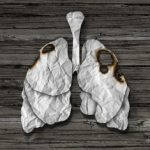During the winter season your risk of pneumonia increases and so for that reason we have compiled together our top health news articles which not only inform you about pneumonia but also educate you on how you can lower your risk of developing it.
If you’ve ever experienced pneumonia you know how hard it is to breath, how difficult it is to move and how overall sluggish and sick you feel. If you’ve never developed pneumonia, consider yourself lucky that you haven’t undergone how dreadful it can actually be.
Advertisement
Although pneumonia is treatable it can cause complications in seniors and pneumonia could be contagious, more so it can even be life-threatening. Therefore, aside from it being a dreadful illness, it can also shorten your life and that is why it’s that much more important that you take the necessary steps to prevent it.
So enjoy the below articles and educate yourself on how you can better protect yourself against pneumonia by being aware of the common risk factors like sleep apnea, lung cancer and the flu shot.
New research suggests that heavy smokers diagnosed with pneumonia are at a greater risk of lung cancer
 New research suggests smokers diagnosed with pneumonia should also be screened for lung cancer as a means to reduce mortality. The findings suggest that heavy smokers diagnosed with pneumonia are at a greater risk of lung cancer – a cancer with only a 27 percent survival rate. Screening should be done by chest-computer tomography.
New research suggests smokers diagnosed with pneumonia should also be screened for lung cancer as a means to reduce mortality. The findings suggest that heavy smokers diagnosed with pneumonia are at a greater risk of lung cancer – a cancer with only a 27 percent survival rate. Screening should be done by chest-computer tomography.
Lead researcher, Daniel Shepshelovich, said, “Lung cancer is truly aggressive. The only chance of recuperation is if it’s caught before it begins to cause any symptoms at all. The idea is to find the tumor well in advance. Previous studies have shown that a low-dose radiation CT scan conducted once a year on heavy smokers has the potential to lower lung cancer mortality rates. But this requires huge resources, and we still don’t know how it will perform in real-world conditions, outside of strictly conducted clinical trials. We want to develop a more realistic and cost-effective strategy targeting a particularly high-risk population.” Continue reading…
Sleep apnea patients face higher pneumonia risk: Canadian Medical Association Journal (CMAJ)
 A study published in the Canadian Medical Association Journal (CMAJ) found a link between sleep apnea and pneumonia. It discussed that those who suffer from sleep apnea are at a higher risk of pneumonia.
A study published in the Canadian Medical Association Journal (CMAJ) found a link between sleep apnea and pneumonia. It discussed that those who suffer from sleep apnea are at a higher risk of pneumonia.
Sleep apnea is a chronic sleep disorder that affects approximately 18 million Americans, so you’re not alone. With sleep apnea, your breathing repeatedly starts and stops throughout the sleep cycle. The interruption in breathing can last seconds to minutes, and normal breathing usually resumes with a loud snort or choking sound. Continue reading…
Flu shot lowers hospitalizations due to influenza pneumonia
 New findings suggest that if more individuals would receive the flu shot, more influenza pneumonia cases and hospitalization could be prevented. The findings came from the Vanderbilt University Medical Center.
New findings suggest that if more individuals would receive the flu shot, more influenza pneumonia cases and hospitalization could be prevented. The findings came from the Vanderbilt University Medical Center.
Associate professor Carlos Grijalva, M.D., said, “We estimated that about 57 percent of influenza-related pneumonia hospitalization could be prevented through influenza vaccination. The finding indicates that influenza vaccines not only prevent the symptoms of influenza, including fever, respiratory symptoms, and body aches, but also more serious complications of influenza, such as pneumonia that requires hospitalization. Appreciating these benefits is especially important now, when we have influenza vaccines available and while we’re preparing for the upcoming influenza season. This is an excellent time to get vaccinated.” Continue reading…
New research reveals the health of the liver plays a role in susceptibility in pneumonia
 New research reveals the health of the liver plays a role in susceptibility in pneumonia. The findings come from Boston University School of Medicine.
New research reveals the health of the liver plays a role in susceptibility in pneumonia. The findings come from Boston University School of Medicine.
Pneumonia is the leading infectious cause of death in children worldwide, according to the World Health Organization. In both children and adults, pneumonia is often associated with sepsis – the body’s own inflammation becomes infected. The infection causes pus-filled sacs to develop and causes the patient to cough. Other symptoms include fever, chills and hard time breathing.
Researchers aimed to imitate sepsis occurring post-pneumonia. To do this, models were treated with a bacterial product followed by live bacterial challenge in the lungs hours later. Continue reading…
Contaminated food could be an important source of human exposure to Klebsiella Pneumoniae
Advertisement
 A new study reveals how contaminated food could be an important source of human exposure to Klebsiella Pneumoniae. The results of the study have enough evidence that suggest this bacteria should be added to the list of risky disease causing bacteria in food products.
A new study reveals how contaminated food could be an important source of human exposure to Klebsiella Pneumoniae. The results of the study have enough evidence that suggest this bacteria should be added to the list of risky disease causing bacteria in food products.
Public health surveillance officials usually discount bacteria that do not cause immediate illness. The current trend is to focus on well-known pathogens such as Salmonella and Campylobacter where the link between food consumption and illness is more evident.
But with the Klebsiella – meat contamination results, discounting bacteria that do not cause immediate illnesses might not be a good idea. Continue reading…
